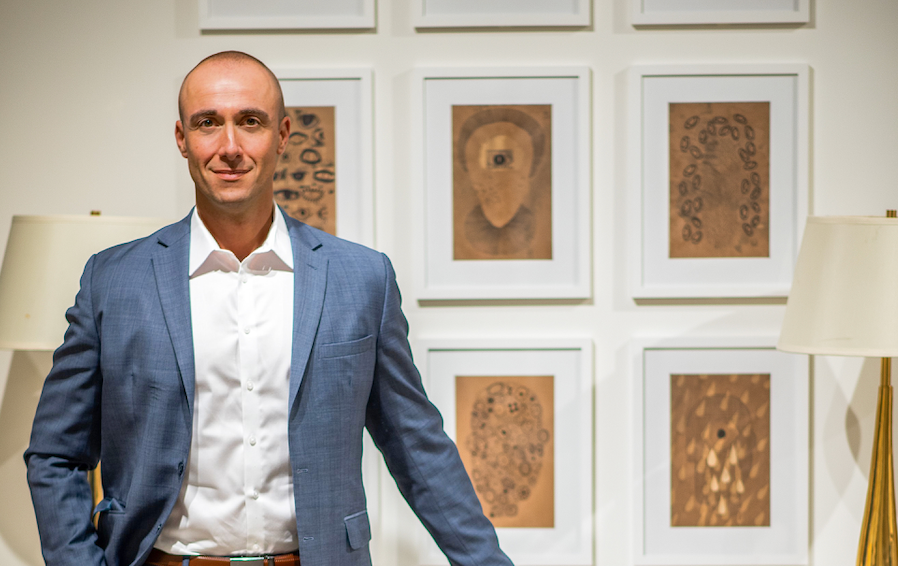It all started with one chair—literally. When Hickory Chair was founded in 1911 in its namesake North Carolina city, its only product was a dining chair. Since then, the brand has survived depressions, two world wars and a global pandemic; and has grown to include a wide array of furniture pieces and 450 employees. And it operates out of the same facility where it all began 113 years ago.
“We expanded over the decades and reinvented ourselves so many times. And of course, in the past two decades, we really focused on designers,” brand president Federico Contigiani tells host Dennis Scully on the latest episode of The Business of Home Podcast. Part of Hickory Chair’s growth has been through licensed collaborations, starting with the Dorothy Robinson collection in 1931 and then the 1941 James River line—which is still sold today. Now, the company taps designers such as Suzanne Kasler, David Phoenix and Kim Scodro for partnerships that help attract the trade, which represents 75 percent of the brand’s business.
One of Contigiani’s priorities when he became president in September 2023 was to revamp the showroom experience—which used to mostly feature pieces in different shades of white—using COM orders as a kind of crystal ball. “Forty-seven percent of our business is actually customer-owned material,” he says. “That gives us visibility to what our customers like and want. We cut a little 2-by-2 piece of fabric from every COM order we receive, and that goes straight to our merchandising team, and then eventually on a board, and we build this rainbow of colors, and we can see where the trends go.”
Elsewhere in the episode, Contigiani discusses what happened at the most recent High Point Market; how Hickory Chair and its fellow Rock House Farm brands act like siblings; how the design industry is and isn’t like fashion; and the challenges of building a home brand.
Crucial insight: Hickory Chair is one of the only companies that manufactures both upholstery and case goods under the same roof, allowing it to have flexibility in customization and a unique control of the supply chain. “Manufacturing case goods is very challenging. It’s a very expensive process. Today, there are companies that manufacture fantastic products overseas—Vietnam, Philippines, you name it,” says Contigiani. “We still have control of what we make. We can still customize what we make. We can still reach the level of detail that otherwise we wouldn’t be able to provide to our customers.”
Key quote: “[Customization] is challenging, but standardizing is not the answer. It’s not for us, and I don’t think it is the answer for our customers. [For us, it’s about] being able to provide a unique meal. It’s something that not every restaurant can do. We obviously have a menu, but our menu has a lot of variables, and that allows you to have a very unique and tailored experience, and I think that’s our strength.”
This episode is sponsored by Loloi and Annie Selke. Listen to the show below. If you like what you hear, subscribe on Apple Podcasts or Spotify.
The Thursday Show
BOH executive editor Fred Nicolaus and host Dennis Scully discuss the biggest news in the industry, including more Charles Cohen drama, changes at the top for several shelter publications, and a look at Kravet’s latest tech experiment. Later, comedian Dan Rosen joins the show to talk about his accidental career as a design critic.
This episode is sponsored by Kohler and Klafs USA. Listen to the show below. If you like what you hear, subscribe on Apple Podcasts or Spotify.





























